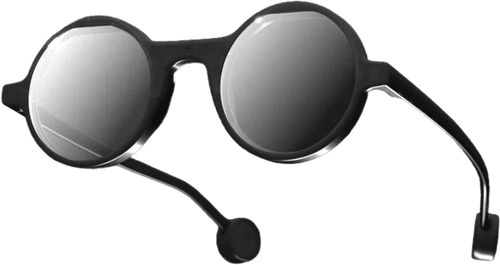In a world where technology continues to blend seamlessly into our daily lives, Brilliant Labs stands out as a pioneer, pushing the boundaries of what's possible in wearable tech. Founded in 2019 by Bobak Tavangar, Brilliant Labs embarked on a mission to integrate artificial intelligence (AI) into eyewear, giving consumers what Tavangar described as "visual superpowers." The company's journey from inception to innovation highlights its commitment to open-source development, enabling creators worldwide to contribute to and expand the capabilities of its products.
The Vision Behind Brilliant Labs
The foundation of Brilliant Labs lies in Tavangar’s vision to transform ordinary eyewear into powerful, intelligent tools. The idea was simple yet profound: why should glasses only correct vision when they could do so much more? By embedding AI into eyewear, Brilliant Labs aimed to create a product that not only enhanced sight but also augmented the wearer's experience of the world.
Open-source development became the cornerstone of this vision. By making their platform accessible, Brilliant Labs invited developers, engineers, and tech enthusiasts to build upon their technology, fostering a collaborative environment where innovation could thrive. This approach not only democratized the development process but also ensured that the products could evolve rapidly, incorporating the latest advancements in AI and user feedback.
The Journey to Frame
Before launching its flagship product, Frame, Brilliant Labs experimented with the Monocle, an augmented reality (AR) lens that could be attached to traditional glasses. The Monocle was a stepping stone, allowing the company to explore the potential of AR and AI in eyewear. It used open-source software, which meant that it was not just a product but a platform for innovation. The Monocle’s success in the tech community demonstrated the appetite for AI-powered eyewear and set the stage for the development of Frame.
Released in January 2024, Frame represented the culmination of years of research, development, and user feedback. The glasses were designed to look like regular eyewear, inspired by the iconic style of Apple co-founder Steve Jobs. This design choice was intentional, aiming to make the technology as unobtrusive as possible, blending seamlessly into the user's daily life.
The Power of Noa and Perplexity
What truly set Frame apart from other smart glasses was its dual AI capabilities: Noa and Perplexity. Noa, the voice assistant, was more than just a tool for answering questions or setting reminders; it was designed to be a conversational partner, capable of understanding context and providing relevant information. Whether navigating a new city or conducting research, Noa offered a hands-free, voice-activated way to interact with the world.
Perplexity, on the other hand, was an AI-driven search engine integrated directly into the glasses. Unlike traditional search engines that require typing queries, Perplexity could be accessed through voice commands, instantly delivering answers, insights, and information. The combination of Noa and Perplexity turned Frame into a multimodal AI assistant, capable of enhancing both everyday tasks and complex problem-solving.
The Competitive Landscape
Brilliant Labs launched Frame at a time when the market for AI-powered wearable tech was becoming increasingly competitive. Companies like Humane, Rabbit, and Apple were all introducing their own versions of smart glasses, each with unique features and capabilities. Humane's AI Pin, Rabbit's R1, and Apple's Vision Pro were all vying for consumer attention, creating a crowded marketplace where innovation was key to standing out.
However, Brilliant Labs had an edge—its commitment to open-source development and the strong community of developers that it had built over the years. This community-driven approach not only accelerated the pace of innovation but also ensured that Frame could continuously evolve, incorporating new features and capabilities that kept it ahead of the curve.
The Future of AI-Enhanced Eyewear
As Brilliant Labs looks to the future, the potential applications of AI in eyewear are vast. Beyond the current capabilities of Noa and Perplexity, there is room for integrating new technologies like augmented reality, machine learning, and even biometric sensors. These advancements could enable glasses to monitor health, provide real-time translations, or offer personalized learning experiences, making them an indispensable tool in both personal and professional settings.
Moreover, the open-source platform will continue to play a crucial role in this evolution. By remaining committed to transparency and collaboration, Brilliant Labs ensures that its products are not just consumer goods but also platforms for innovation. The company’s community of developers will likely continue to expand, driving the next generation of AI-enhanced eyewear.
Conclusion
Brilliant Labs is more than just a technology company; it is a trailblazer in the realm of AI and wearable tech. By integrating artificial intelligence into eyewear, the company has redefined what glasses can do, turning them into powerful tools that enhance our interaction with the world. The journey from the Monocle to Frame reflects Brilliant Labs’ commitment to innovation, open-source development, and user-centered design.
As the market for smart eyewear continues to grow, Brilliant Labs is well-positioned to lead the charge, offering products that not only meet the needs of today’s consumers but also anticipate the demands of tomorrow. With its eyes set firmly on the future, Brilliant Labs is poised to continue its mission of empowering users with "visual superpowers," one pair of glasses at a time.





Comments